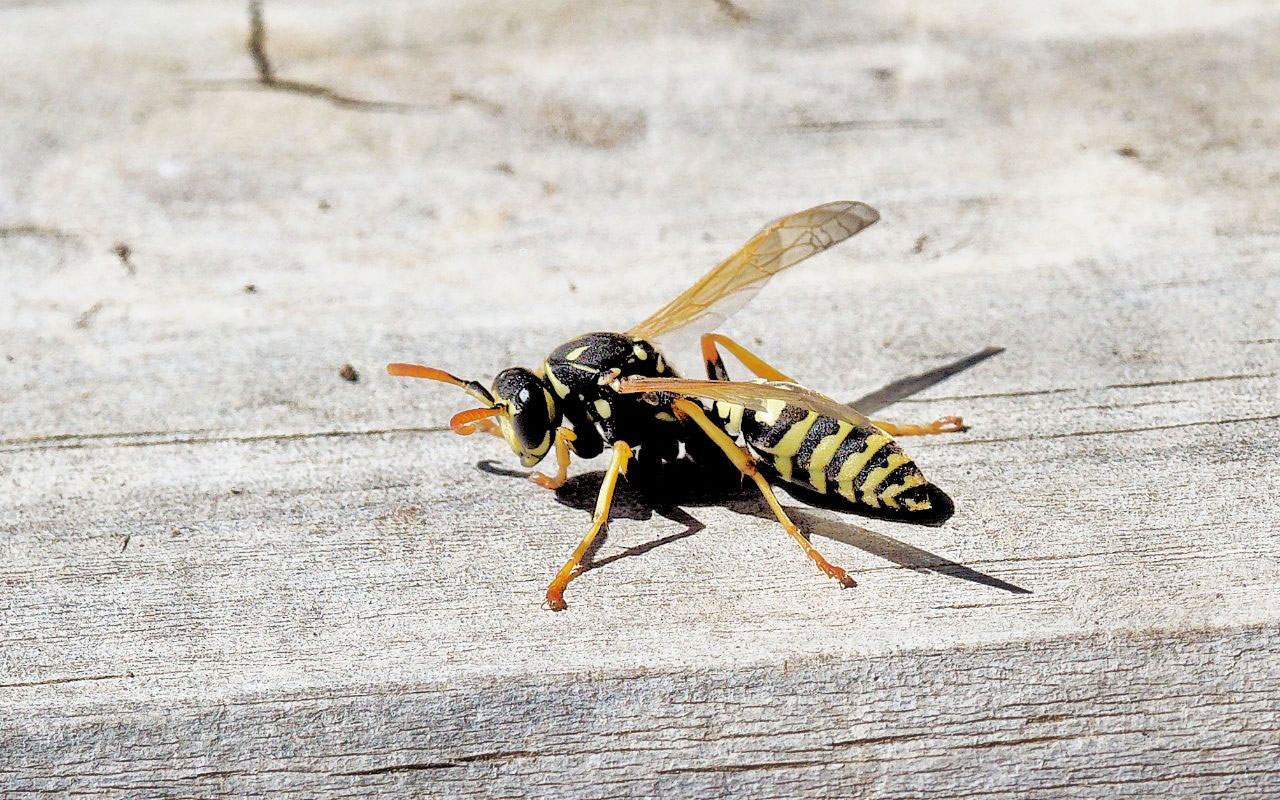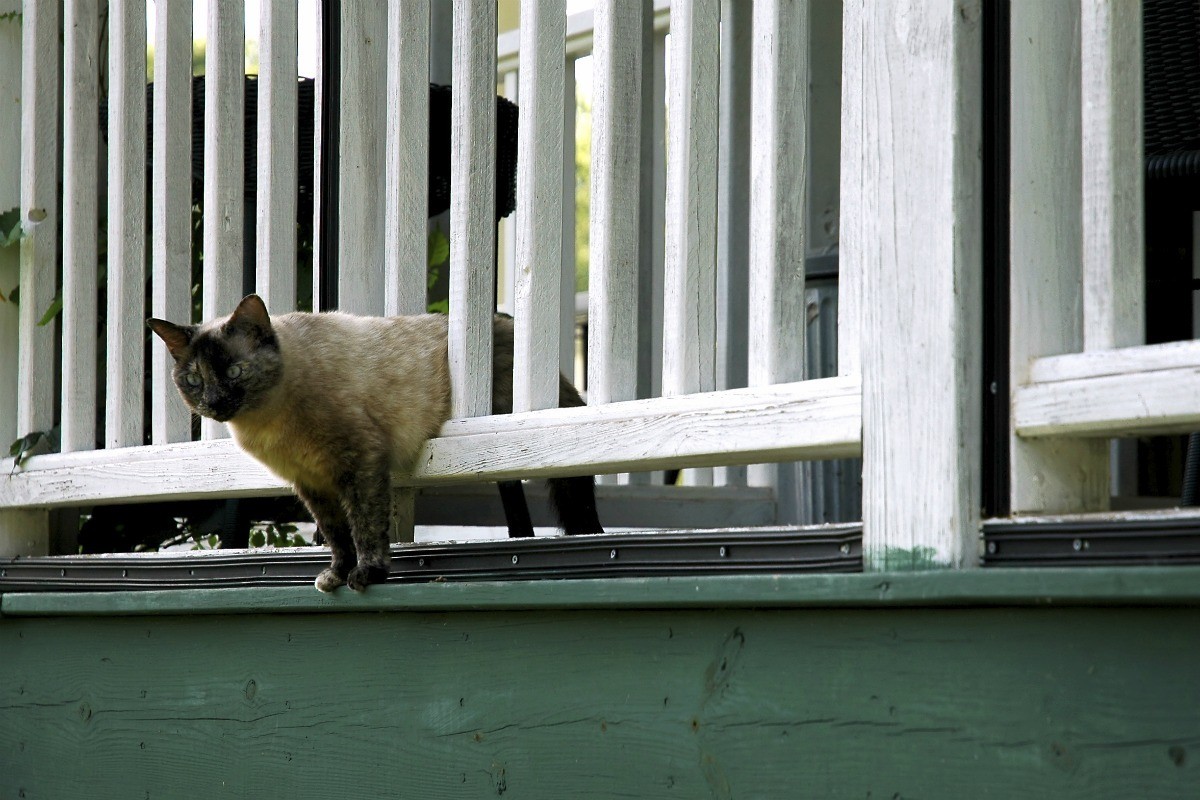

Articles
How To Keep Dogs Off Porch
Modified: May 6, 2024
Learn effective methods to keep dogs off your porch with these informative articles. Discover useful tips and tricks to maintain a dog-free space.
(Many of the links in this article redirect to a specific reviewed product. Your purchase of these products through affiliate links helps to generate commission for Storables.com, at no extra cost. Learn more)
Introduction
Welcome to this comprehensive guide on how to keep dogs off your porch. Many homeowners love their furry friends but may face challenges when it comes to dogs intruding on their property. Whether it’s a neighbor’s dog or a stray, having uninvited canines on your porch can be a nuisance. Not only can they create a mess, but they may also cause damage to your property or even pose a threat to your safety. In this article, we will explore effective methods to prevent dogs from accessing your porch and offer some helpful tips to minimize their presence.
Dogs are naturally curious creatures and may be drawn to your porch for various reasons. They may be attracted by smells, seeking shelter, or simply exploring their surroundings. Understanding the root cause behind their behavior is crucial in order to address the issue effectively. Rather than resorting to harsh methods, we will focus on humane and gentle approaches that will help you protect your porch without causing harm to the animals.
Creating physical barriers is one of the first steps you can take to deter dogs from accessing your porch. Installing gates or fences can prevent them from entering your property altogether. Additionally, blocking off any gaps or openings in your existing fencing can ensure there are no entry points for dogs to slip through. We will delve into more details on how to create effective physical barriers in the next section.
Repellents and deterrents can also be valuable tools in keeping dogs off your porch. There are several natural and commercial products available that emit scents or produce sounds that dogs find unpleasant. These substances are safe for both humans and animals but can effectively discourage dogs from settling on your porch. We will provide recommendations on effective repellents and deterrents and explain how to use them properly for optimum results.
Positive reinforcement training can be another effective approach to prevent dogs from accessing your porch. By teaching a dog that it will receive rewards for staying away from your porch, you can train them to avoid the area. We will outline some training techniques that focus on positive reinforcement and offer guidance on how to implement them effectively.
If all else fails, seeking professional help may be the best course of action. Animal control services or local shelters can provide assistance in dealing with stray dogs or persistent intruders. They have the expertise and resources to handle these situations safely and efficiently. We will offer advice on how to reach out to the appropriate authorities and organizations for assistance.
Now that we have outlined the main sections of this guide, let us explore each topic in greater detail. By implementing the techniques and strategies provided in this article, you can successfully keep dogs off your porch and maintain a clean, safe, and peaceful environment for you and your family.
Key Takeaways:
- Create a dog-free porch by using physical barriers, repellents, positive reinforcement training, and seeking professional help. Understand the root cause of dogs’ attraction to your porch to implement targeted solutions effectively.
- Implement a combination of humane methods to deter dogs from your porch, such as physical barriers, repellents, positive reinforcement training, and seeking professional help. Approach the issue with kindness, patience, and consistency for a dog-free porch.
Read more: How To Keep Chickens Off Of Porch
Understanding the Root Cause
Before delving into effective methods to keep dogs off your porch, it’s important to understand the root cause behind their behavior. By identifying why dogs are attracted to your porch, you can address the issue at its source and develop targeted solutions.
There can be several reasons why dogs are drawn to your porch:
- Smells: Dogs have a highly sensitive sense of smell and may be tempted by odors coming from your porch. They can pick up scents left by other animals, food remnants, or even the scent of your own pets. This can make your porch an appealing destination for them.
- Shelter: Dogs may seek refuge on your porch if they are stray or have inadequate shelter elsewhere. The porch provides cover from the elements, such as rain, wind, or extreme temperatures. Creating an environment that is less inviting for shelter-seeking dogs can help deter them.
- Territory marking: Dogs are known for marking their territory by urinating or leaving their scent. If a dog perceives your porch as part of its territory, it may repeatedly visit and mark it as a way to assert dominance. Breaking this association is crucial in deterring dogs from frequenting your porch.
- Curiosity: Dogs are naturally curious animals and may explore different areas to satisfy their inquisitive nature. Your porch may be seen as an interesting place to investigate, especially if there are enticing objects, sounds, or movements nearby.
By understanding these underlying motivations, you can tailor your approach to discouraging dogs from coming onto your porch. For example, if the primary issue is the smell, you can focus on removing any odors that may attract dogs. This can involve regular cleaning of the porch, sealing trash bins properly, and ensuring there are no lingering food or pet-related odors.
If the problem is related to stray or shelter-seeking dogs, you may consider contacting local animal welfare organizations or shelters to assist in finding suitable solutions for these animals. They can provide resources or guidance on how to address the issue humanely and ensure the well-being of the dogs.
When dealing with territorial marking, it’s important to disrupt the association between the dog and your porch being part of its territory. This can be achieved by implementing various methods, such as using deterrents, training, or creating physical barriers that create a clear boundary.
Recognizing that curiosity is another driver for dogs’ porch visits, you can focus on providing alternative outlets for their exploration. This may involve creating designated play areas or providing toys and objects of interest elsewhere in your yard to redirect their attention away from your porch.
By gaining insight into the root cause of dogs’ attraction to your porch, you can develop a more effective plan to keep them away. In the following sections, we will explore practical methods and strategies to create physical barriers, implement repellents and deterrents, apply positive reinforcement training, and seek professional assistance when needed.
Creating Physical Barriers
Physical barriers are an effective way to keep dogs off your porch by preventing their access altogether. By creating boundaries and obstacles, you can establish clear boundaries and discourage dogs from entering your property. Here are some methods to consider:
- Fencing or Gates: Installing a sturdy fence around your porch or property can serve as a reliable barrier. Choose a fence that is tall enough to prevent dogs from jumping over and has small gaps to prevent them from squeezing through. Adding a lockable gate provides an extra layer of security.
- Pet Barriers: If you have pets of your own, consider installing pet-specific barriers that keep them confined to certain areas. This can prevent your pets from roaming onto the porch and attracting other dogs.
- Wire Mesh or Netting: Attach wire mesh or netting to any openings or gaps in existing fences or structures that dogs can squeeze through. This will add an extra layer of protection and prevent dogs from finding their way onto your porch.
- Plant Barriers: Planting thorny bushes or prickly plants around your porch can act as a natural deterrent. Dogs will be discouraged from approaching the area to avoid getting scratched or poked by the plants. Ensure that the plants you choose are not toxic to dogs.
- Scare Tactics: Consider using scare devices, such as motion-activated sprinklers or ultrasonic devices, that startle dogs when they approach your porch. These sudden bursts of water or ultrasonic sounds are harmless but can be effective in deterring dogs from accessing your porch.
Additionally, it’s important to eliminate any potential entry points that dogs may use to bypass the barriers. Check for gaps under fences, holes in walls or gates, or areas where the fence may be leaning or damaged. Repairing these areas will reinforce the physical barriers and make them more effective in keeping dogs off your porch.
Remember that the goal is to create a secure and dog-free porch environment, so it’s essential to regularly inspect and maintain the physical barriers. Monitor the fence for any signs of wear or damage, and promptly address any issues that may compromise their effectiveness.
While physical barriers can be a highly effective way to keep dogs off your porch, it’s important to note that they should be used in conjunction with other methods, such as repellents and positive reinforcement training. Combining these strategies will provide a comprehensive approach to deterring dogs and maintaining a dog-free porch.
In the next section, we will explore the use of repellents and deterrents as additional measures to discourage dogs from accessing your porch.
Implementing Repellents and Deterrents
In addition to physical barriers, repellents and deterrents can be effective tools in keeping dogs off your porch. These products work by emitting scents or producing sounds that are unpleasant for dogs, making them less likely to approach or linger in the area. Here are some options to consider:
- Natural Repellents: Certain natural substances are known to repel dogs due to their strong scents. Vinegar, citrus peels, pepper, and ammonia are examples of natural repellents that can be sprayed or scattered around your porch. These are safe and environmentally friendly options.
- Commercial Repellents: There are many commercial repellents available specifically designed to deter dogs from specific areas. These may come in the form of sprays, granules, or electronic devices. Look for products that use natural ingredients and are safe for both humans and animals.
- Ultrasonic Devices: Ultrasonic devices emit high-frequency sounds that are unpleasant to dogs but inaudible to humans. These devices can be placed on your porch and activated when dogs approach. Their deterrent effect can vary, so it’s important to choose a device that is suitable for your porch size and needs.
- Motion-Activated Sprinklers: Motion-activated sprinklers are effective in deterring dogs from approaching your porch. When they detect movement, the sprinklers release a burst of water, startling the dogs and discouraging them from coming closer. This serves as a harmless yet effective deterrent.
- Aversive Scents: Dogs have a sensitive sense of smell, and certain scents can repel them. You can experiment with various aversive scents, such as citronella, vinegar, or bitter apple, and apply them to surfaces or objects on your porch. The unpleasant smell will discourage dogs from approaching.
When using repellents and deterrents, it’s important to follow the instructions provided by the manufacturer. Apply them as directed and reapply them as necessary to maintain their effectiveness. Keep in mind that some dogs may become accustomed to certain repellents over time, so it may be necessary to alternate or combine different products for maximum effectiveness.
While repellents and deterrents can be beneficial, it’s essential to use them in a humane manner. The goal is to discourage dogs from coming onto your porch, not to cause them any harm. Avoid using harsh chemicals or devices that may cause unnecessary stress or discomfort to the dogs. Focus on creating a safe and unwelcoming environment for them without inflicting any harm.
Next, we will explore the power of positive reinforcement training in keeping dogs off your porch.
To keep dogs off the porch, try using a motion-activated sprinkler or applying a pet-safe repellent spray. You can also create a physical barrier with a gate or fence to prevent access.
Positive Reinforcement Training
Positive reinforcement training is a humane and effective method to teach dogs to avoid your porch. By focusing on rewarding desired behavior, you can train dogs to associate staying away from your porch with positive outcomes. Here are some steps to implement positive reinforcement training:
- Identify a designated “off-limits” area: Choose a specific area where you want to train the dogs to stay away from, which in this case is your porch.
- Set up rewards: Prepare a supply of high-value treats or toys that dogs find particularly enticing. These will be used as rewards for staying away from the porch.
- Observe and reward: Monitor your porch area and when you notice a dog approaching, use a firm and calm voice command, such as “Off” or “Stay away.” When the dog responds and moves away from the porch, immediately reward them with a treat or playtime with a favorite toy.
- Consistency is key: Be consistent in your training routine. Repeat the process consistently every time you observe a dog approaching the porch and reward them for complying with your command. This will reinforce the association between staying away from the porch and receiving rewards.
- Extend the training: Gradually expand the training to include different situations, distances, and distractions. Practice in various scenarios where dogs may be tempted to approach your porch, such as when you have guests or when there are other animals nearby.
- Monitor and reinforce: Continue monitoring the porch area and reinforce the training whenever necessary. Over time, the dogs will learn that staying away from the porch is the desired behavior.
It’s important to note that positive reinforcement training requires patience, consistency, and time. Different dogs may respond differently, so be prepared to adjust your approach and tailor the training to their individual needs. Remember to always reward the desired behavior and avoid punishment or harsh methods, as this can lead to fear or aggression in dogs.
In addition to rewards, using verbal praise and physical affection can also reinforce the training. Give the dogs verbal praise and pet them when they comply with your command and stay away from the porch. This positive reinforcement will help solidify the association between the desired behavior and positive experiences.
Positive reinforcement training not only keeps dogs off your porch, but it also strengthens the bond between you and the dogs. By utilizing reward-based training, you can create a positive and enjoyable training experience for both you and the dogs involved.
While positive reinforcement training can be highly effective, it may not work for all dogs, especially if they have deeply ingrained behavioral issues or if they are stray animals. In such cases, it is advisable to seek professional help or contact local animal control services for further assistance.
Let’s move on to explore the option of seeking professional help in dealing with dogs on your porch.
Read more: How To Keep Dogs Off The Bed
Seeking Professional Help
If you have exhausted various methods and still struggle to keep dogs off your porch, seeking professional help may be the best course of action. Professional assistance can provide expertise, guidance, and resources to address the issue effectively. Here are some options to consider:
- Animal Control Services: Contact your local animal control services to report the presence of stray dogs on your porch. They have the authority and resources to handle such cases and can provide assistance in capturing and relocating stray dogs safely and humanely.
- Local Shelters: Reach out to local animal shelters or rescue organizations in your area. They may offer programs or services to help address issues related to stray dogs or provide advice on how to deal with persistent intruders. They can also provide information on spaying/neutering programs and offer guidance on responsible pet ownership in your community.
- Professional Dog Trainers: Consider consulting with a professional dog trainer who specializes in behavior modification. They can assess the situation, tailor a training plan specifically for your porch issue, and work with you to implement effective strategies to keep dogs away. A professional trainer can provide invaluable guidance and support throughout the training process.
- Veterinarians: Consult with veterinarians who have experience in dealing with behavioral issues in dogs. They can provide insight into the underlying causes of dogs’ porch visits and offer advice on potential medical conditions or behavioral solutions. They may also recommend medications or pheromone products that can help alleviate anxiety or stress-related behaviors in dogs.
When seeking professional help, be sure to provide detailed information about the problem, including the frequency and time of dog visits, descriptions of the dogs, and any additional relevant details. This will enable professionals to better assess the situation and provide appropriate recommendations or interventions.
It’s important to keep in mind that professional assistance may come at a cost, depending on the services required and the organizations or individuals involved. However, the expertise and guidance provided by professionals can significantly increase your chances of resolving the issue and maintaining a dog-free porch.
In the end, the goal is to create a safe, clean, and inviting porch environment for you and your family. By seeking professional help, you can access the necessary resources and expertise to address the issue effectively and find a long-term solution.
Now, let’s summarize the key points discussed in this comprehensive guide on how to keep dogs off your porch.
Conclusion
Keeping dogs off your porch can be a challenge, but with the right strategies and approaches, it is possible to create a dog-free environment. In this comprehensive guide, we explored various methods to deter dogs from accessing your porch, including physical barriers, repellents and deterrents, positive reinforcement training, and seeking professional help.
Understanding the root cause of dogs’ attraction to your porch is essential in addressing the issue effectively. By identifying why dogs are drawn to your porch, you can implement targeted solutions to discourage their presence.
Creating physical barriers, such as fences, gates, wire mesh or netting, and plant barriers, can help prevent dogs from accessing your porch. These barriers establish clear boundaries and prevent dogs from entering your property.
Repellents and deterrents, whether natural or commercial, emit scents or produce sounds that dogs find unpleasant. These products deter dogs from approaching or staying on your porch, helping to maintain a dog-free environment.
Positive reinforcement training is a humane and effective method to teach dogs to stay away from your porch. By rewarding desired behavior and using consistent commands, you can train dogs to associate staying away from the porch with positive outcomes.
If your efforts are not successful, seeking professional help is a valid option. Animal control services, local shelters, professional dog trainers, and veterinarians can provide expertise, guidance, and resources to address the issue and find a suitable solution.
In conclusion, you have the power to keep dogs off your porch by implementing a combination of methods that work best for your situation. Remember to approach the issue with kindness, patience, and consistency. By creating a safe and welcoming environment for yourself and your family, you can enjoy your porch without the presence of unwanted dogs.
Thank you for reading this comprehensive guide on how to keep dogs off your porch. We hope that the information provided has been helpful and that you can successfully implement these strategies in your own situation. Here’s to a dog-free porch and a peaceful, enjoyable outdoor space!
Now that you've got some great strategies for maintaining a dog-free porch, why not turn your attention to sprucing up that outdoor space? Our next piece dives into vibrant decor and strategic add-ons that transform any deck into a haven for outdoor living. You'll find simple yet impactful decorating tips that not only enhance your space but make it the perfect spot for relaxation and entertainment. Don't miss out on creating that ideal outdoor retreat!
Frequently Asked Questions about How To Keep Dogs Off Porch
Was this page helpful?
At Storables.com, we guarantee accurate and reliable information. Our content, validated by Expert Board Contributors, is crafted following stringent Editorial Policies. We're committed to providing you with well-researched, expert-backed insights for all your informational needs.















0 thoughts on “How To Keep Dogs Off Porch”